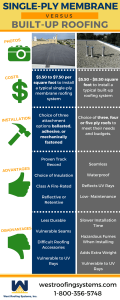Assess The Economic Implications And Benefits Of Solar Installation To Recognize The Prospective Economic Advantages For Those Interested In This Renewable Energy Endeavor
Assess The Economic Implications And Benefits Of Solar Installation To Recognize The Prospective Economic Advantages For Those Interested In This Renewable Energy Endeavor
Blog Article
Writer-Gade Jensen
When thinking about the prices of solar setup, you could wonder about the ahead of time financial investment required and whether it straightens with the potential lasting benefits. Recognizing the intricacies of these expenses and the different elements affecting the general return can shed light on the worth proposal of transitioning to solar power. By assessing both the preliminary setup costs and the forecasted cost savings over time, you can acquire understanding right into whether the investment in solar setup holds promise for your economic future.
Initial Setup Expenditures
When thinking about the prices of solar setup, the initial setup costs play a crucial role in your decision-making process. These ahead of time costs consist of the rate of photovoltaic panels, inverters, placing tools, and installation labor.
The cost of solar panels can vary depending on the brand name, performance, and dimension you pick. Inverters are essential for transforming the sun's power into useful power and come in different kinds such as string inverters, microinverters, and power optimizers, each with its very own cost effects.
Mounting equipment, such as shelfs and rails, is essential to firmly mount solar panels on your roof or residential property.
https://www.indystar.com/story/news/environment/2022/10/17/solar-power-panels-scam-no-cost-free-energy-panel-system-home-indiana-house/69545641007/ covers the expert setup of the planetary system, guaranteeing that everything is set up properly and efficiently. Bear in mind that while these initial setup expenditures might appear high, there are often refunds, tax obligation incentives, and funding alternatives available to assist balance out the costs and make solar setup extra economical in the long run.
Long-Term Financial Savings Analysis
To understand the monetary advantages of solar setup with time, it's important to conduct a detailed long-term cost savings analysis. While https://solar-inverter-installati85069.blogs100.com/30714330/choosing-the-perfect-solar-power-supplier-for-your-house-a-comprehensive-step of photovoltaic panels may seem daunting, the long-lasting financial savings can outweigh these expenses substantially. By using the power of the sun to produce power for your home, you can potentially conserve thousands of dollars on your utility bills over the life-span of your solar system.
One of the crucial factors to think about in a long-term cost savings analysis is the reduction in your electricity bills. With photovoltaic panels, you can create your electrical power, minimizing and even removing your reliance on the grid. This can result in significant financial savings, particularly as utility prices continue to climb.
Additionally, lots of federal governments supply incentives such as tax obligation credit histories and refunds for installing photovoltaic panels, additionally enhancing your long-lasting financial savings. By taking advantage of these rewards and optimizing your solar energy production, you can appreciate significant economic benefits for several years to come.
Roi Computation
Considering the monetary benefits of solar setup, it's time to assess the Return on Investment (ROI) calculation. Establishing the ROI entails comparing the overall costs of mounting a planetary system with the financial advantages it produces over its life-span.
To calculate ROI, divide the net benefit from the system by the total financial investment cost and increase by 100 to obtain a percent. The ROI formula is: (Net Profit/ Total Amount Investment Cost) x 100.
As an example, if the complete price of installing a solar system is $20,000, and over its life expectancy, it generates financial savings and profits totaling $30,000, the web revenue would certainly be $10,000. Dividing this by the complete investment expense of $20,000 provides a proportion of 0.5. Multiplying higher power solar energy company by 100 gives an ROI of 50%.
Typically, a greater ROI indicates a much more financially gratifying financial investment. Aspects like government rewards, upkeep expenses, and power cost variations can affect the ROI of solar installations. Recognizing the ROI aids in assessing whether purchasing solar power is worth it in the future.
Final thought
To conclude, understanding the expenses of solar installation is crucial for establishing if it is worth the investment. By taking into consideration preliminary configuration expenditures, carrying out a long-term savings evaluation, and determining the return on investment, you can make a notified decision about the monetary value of solar power. With the possibility for decreased utility bills and increased energy independence, purchasing solar installment can be a smart choice for both your purse and the atmosphere.
